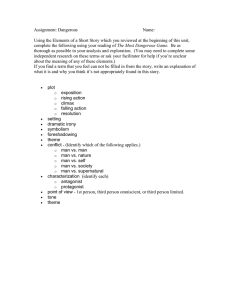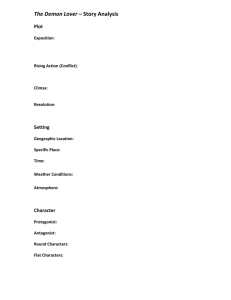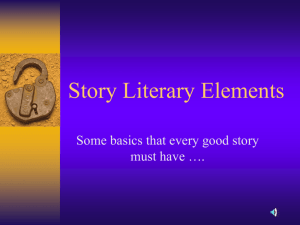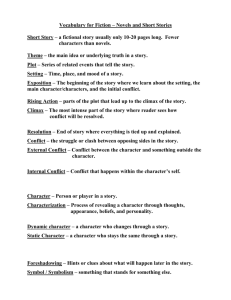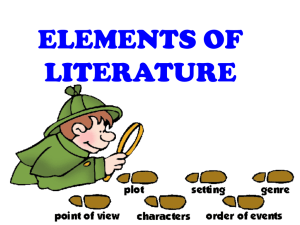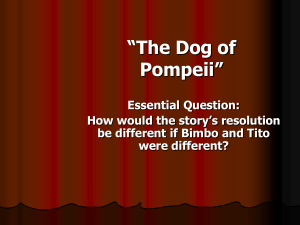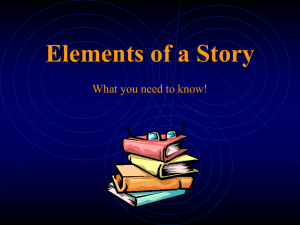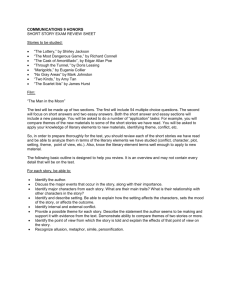Literature: Elements of Fiction Quiz
advertisement
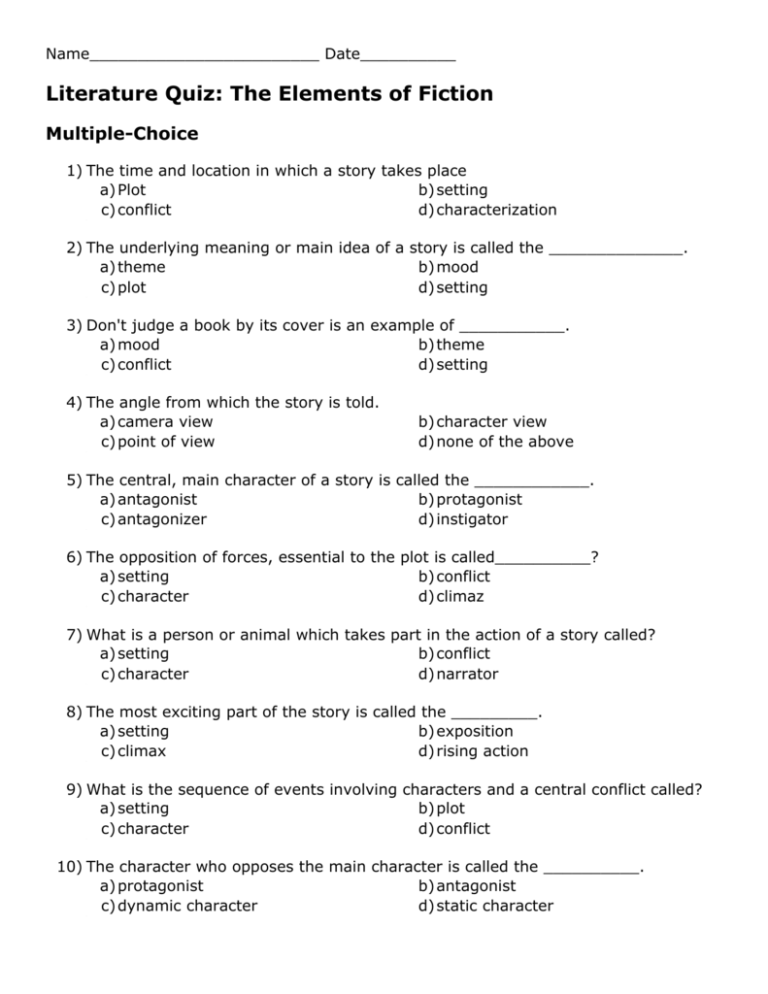
Name________________________ Date__________ Literature Quiz: The Elements of Fiction Multiple-Choice 1) The time and location in which a story takes place a) Plot b) setting c) conflict d) characterization . 2) The underlying meaning or main idea of a story is called the ______________. a) theme b) mood c) plot d) setting . 3) Don't judge a book by its cover is an example of ___________. a) mood b) theme c) conflict d) setting . 4) The angle from which the story is told. a) camera view c) point of view b) character view d) none of the above . 5) The central, main character of a story is called the ____________. a) antagonist b) protagonist c) antagonizer d) instigator . 6) The opposition of forces, essential to the plot is called__________? a) setting b) conflict c) character d) climaz . 7) What is a person or animal which takes part in the action of a story called? a) setting b) conflict c) character d) narrator . 8) The most exciting part of the story is called the _________. a) setting b) exposition c) climax d) rising action . 9) What is the sequence of events involving characters and a central conflict called? a) setting b) plot c) character d) conflict . 10) The character who opposes the main character is called the __________. a) protagonist b) antagonist c) dynamic character d) static character . 11) All events leading up to the climax? a) exposition c) falling action b) resolution d) rising action . 12) All events after the climax and leading to the___________. a) exposition b) resolution c) rising action d) falling action . 13) What is the term called is for evoking complex ideas without having to resort to painstaking explanations. a) style b) theme c) symbolism d) mood . 14) Comparison of two unlike things that use like or as is called_________. a) foreshadowing b) simile c) metamphor d) figurative language . 15) Any language that goes beyond the literal meaning of words in order to furnish new effects or fresh insights into an idea or a subject. a) figurative language b) exposition c) symbolism d) foreshadowing . 16) "A brave handsome brute fell with a creaking rending cry"--the author is giving a tree human qualities. This is an example of ________________. a) alliteration b) hyperbole c) onomatapoeia d) personification . Matching 17) 18) 19) 20) 21) 22) 23) 24) 25) 26) 27) 28) ______ ______ ______ ______ ______ ______ ______ ______ ______ ______ ______ ______ characterization donnee plot major character setting antagonist irony protagonist genres of literature paraphrase verisimilitude theme a) the time, place, and social environment that frames the characters b) premise c) the arrangement of events that make up a story d) the central idea or meaning of a story e) important figure at the center of the story's action or theme f) realism g) means by which writers present and reveal characters h) the "hero" of the story i) the "bad guy" ot the story j) involves a contrast or discrepancy between one thing an another k) a concise summary l) prose, poetry, and drama . .
